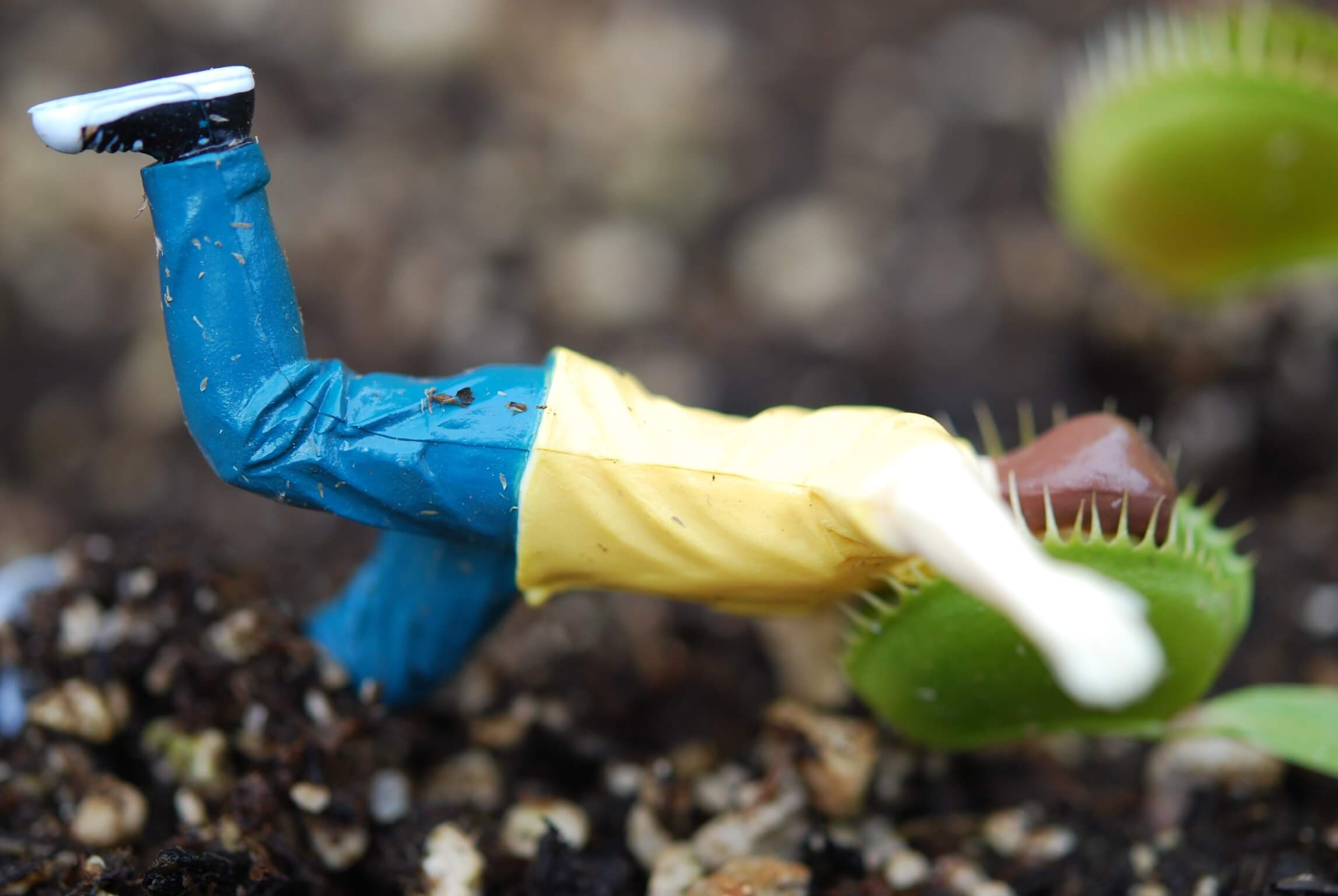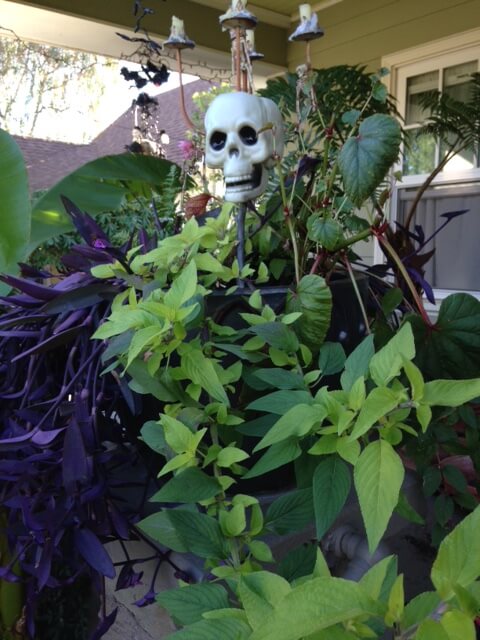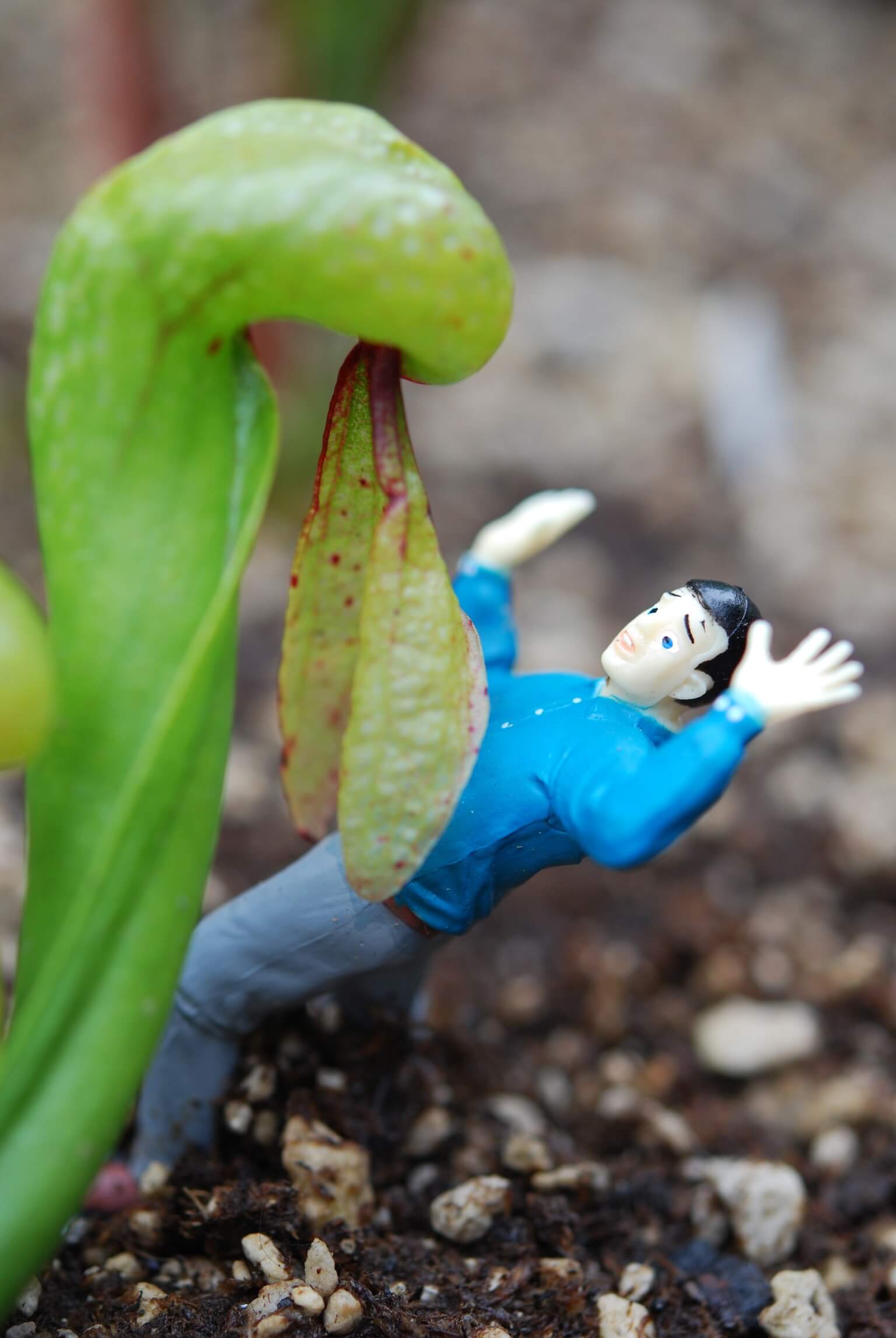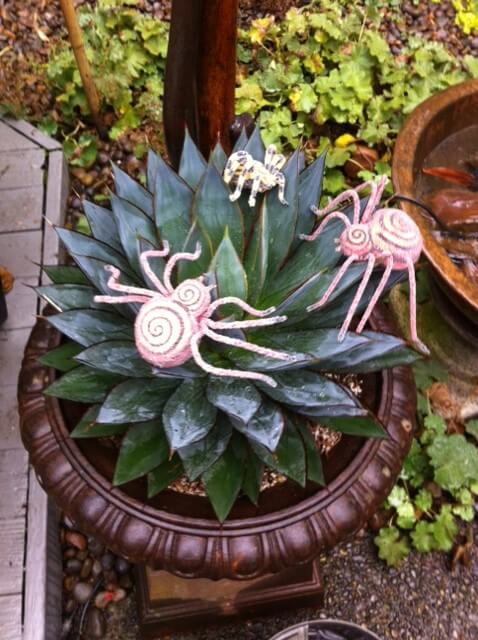
The gardening season we experienced this past summer and early fall has been one of the best that I can remember. Vegetable gardens performed beyond the expectation of most gardeners with tomatoes, especially some of the long-season and late-ripening varieties, benefiting from the warm summer and fall. However, this is October, and it is time to say goodbye to summer and hello to autumn and Halloween.

Carving pumpkins is certainly a traditional Halloween custom that many gardeners will enjoy, but they might also look around the yard to discover some new spooky garden ideas. I enjoy the creativity that many gardeners have, and it is fun to see what they do to come up with something original for the season. Often the most creative ideas can be something quite simple, and with some imagination they can be made to reflect whatever the season may be, in this case Halloween.
Portland, Oregon gardener Jeri Gedrose had a summer hanging basket with black sweet potato vine and red salvia. Unfortunately, just as the salvia was getting ready to bloom, it broke off in a wind storm. While the basket looked rather bare without the salvia, Jeri was not ready to give up on it, and she decided to make the basket into something to tie in with the Halloween season. With a plastic skull placed in the middle of the basket, she created quite a conversation piece at her front door. The addition of a spot light on the skull makes it all the more effective and has proven to have a spooky effect.
Another Portland gardener, Craig Quirk, has an extensive collection of carnivorous plants. Halloween is the perfect season to have some fun with action figures, and he makes it appear that the carnivorous plants are attacking or eating the figures. By having a grouping of these by the front door, it is a delight to see the fun expressions of trick or treaters, especially when they realize that the action figures are fake, but the plants are the real thing.

Sometimes very simple plants and/or garden art can be rearranged or in some fashion have something of the seasons added to them. Just the addition of some webs or spiders on an Agave or cactus can change it to a Halloween piece. (Caution! Sharp spines should be placed where children are not able to touch them.)
It can be very fun to use plants for Halloween decorations, but we must also remember to do some necessary tasks in our gardens. We will soon be into November and a frost is likely to happen soon, which will mean the end of most summer annuals and tender perennials.
For example, if you have a favorite Brugmansia and would like to make some cuttings from it, the time to do it is before a frost. Brugmansia is a very easy plant to start from cuttings. Cut 5-6 inches off the tips of the branches, and remove the leaves except for perhaps one at the top. Place cuttings in a jar of water and within several weeks, roots should appear. Once there are some roots, plant each cutting in a small pot with Black Gold Natural & Organic Potting Mix. Then place the pot in a sunny window, keep it watered and you will have your own Brugmansia to plant outside in the spring.

Dahlias will probably begin to cease blooming, and this is the time to cut them to the ground. Dahlia growers will often put a small plastic baggie over the hollow stem to keep the water out. Then mulch with Black Gold Garden Compost Blend for added winter protection. If there are other plants that need a mulch, this is the time to do it.
Autumn is a wonderful time to visit a local park, arboretum or public garden and observe what is providing fall color. Living in the Pacific Northwest, we have an abundance of plants, both shrubs and trees, that can brighten a gloomy day. Always remember that our gardens are meant to be enjoyable, and I like to tell people to take a few moments and stop and look around them at the abundance of color. This time of year there is more color from foliage than at any other time. The old saying in the summer of “stop and smell the roses” can be adjusted to the autumn by saying “stop and look at the foliage”.

